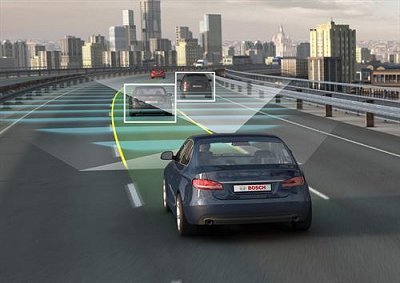Bosch to Automate Traffic Jams?

A 2012 survey found nearly one in three people would consider buying a vehicle that could drive itself - an "autonomous car". Better, more than 25% of all drivers - and more than half of young drivers - said they would enjoy an autonomous car as much as driving themselves.
Bosch already provides high-performance assistance systems, including vehicle-following cruise control and predictive emergency braking, to help drivers travel safely and comfortably.
'Jam assistant'
Its technology can also alert drivers to traffic jams and redirect them and, manoeuvre vehicles into the tightest of parking slots. Soon the Bosch systems will extend to a traffic-jam assistant with which vehicles will brake, accelerate and steer autonomously at up to 50km/h.
Gerhard Steiger, president of the Bosch Chassis Systems Control division, said: “The traffic-jam assistant helps drivers arrive at a destination relaxed, even through dense traffic.”
No doubt many UK drivers who thought an autonomous car would be as enjoyable as driving themselves were imagining a vehicle that could relieve the stress of the daily commute. 'Adaptive cruise-control uses front-mounted sensors to keep a safe distance from the preceding vehicle while 'lane departure warning' keeps the car on course.
For fully autonomous driving, the next step would be automatic lane changing which would require a rear-mounted sensor to detect vehicles approaching from behind and a dynamic navigation system to keep drivers informed of traffic situations and local speed restrictions.
Coming soon
Bosch offers vehicle manufacturer customers all of the sensors and systems required to develop autonomous driving technologies. For example, Bosch’s high-performance long-range radar can detect objects up to 250m ahead. In addition, a stereo video camera can detect objects in 3D, calculate how far objects are away from a vehicle, and even the direction in which they are moving.
“Fully autonomous driving will come about one step at a time,” Steiger says. "At first, driving on highways with an ever greater degree of automation and at ever higher speeds will be possible, until the highway pilot can take over the entire trip.
“Two major challenges remain: first, inner-city driving, since automated vehicle functions have to deal with dense traffic involving a large number of road users traveling in every direction; second, developing a concept to ensure that the system’s functions operate reliably in all road situations.
The first generation of the traffic-jam assistant is expected to enter series production in 2014. In following years the feature will be enhanced to cover ever-faster speeds and more complex driving situations.
Eventually, the traffic-jam assistant will make fully autonomous driving a reality.
Nouvelles connexes


